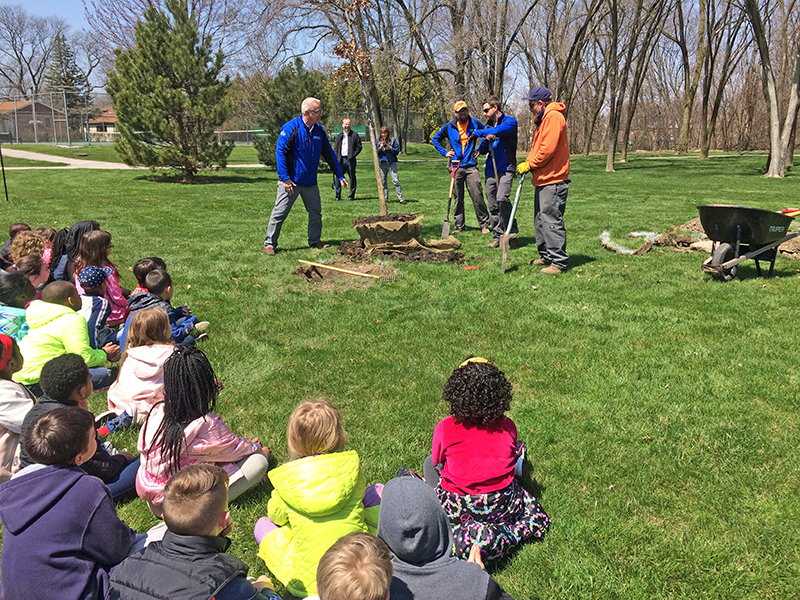The first and second graders wiggled and barked and fluttered. It was all part of their pretending to be a tree on Friday, April 27, as they took part in the planting of a tree for Arbor Day, a national day that celebrates trees.
readies a white oak for planting as part of the
Arbor Day program for Willow School students.
(Photos by Marilyn Thomas/H-F Chronicle)
The first and second graders wiggled and barked and fluttered. It was all part of their pretending to be a tree on Friday, April 27, as they took part in the planting of a tree for Arbor Day, a national day that celebrates trees.
moved handfuls of dirt
to help fill in around the
tree they planted at Indian
Trail Park.
Cheryl Vargo, manager of the Homewood-Flossmoor Park District’s Irons Oaks Environmental Learning Center, gave the kids an introduction to the white oak they were planting at Indian Trail Park. The white oak is the state tree of Illinois, but unlike most trees, it doesn’t drop its leaves in fall. As spring buds push through, they will move the old leaves off the branches.
- Trees are doing nothing? False, trees are going through the paces of growth. They offer shelter for birds and insects and shade for people.
- Trees are very active? True, trees are constantly working at producing food and giving off oxygen.
- Trees are quiet? False. If you took a stethoscope to a tree you’d find they are quite noisy, Vargo told the children.
dirt around the white oak
planted at Indian Trail Park
in celebration of Arbor Day.
With that, Vargo took the two classes of Willow School students on a journey she called the tree factory. Each student got a part as they “created” a tree to better understand what’s going on inside the oak they planted.

